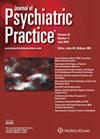从华盛顿大学(或Feighner)精神病学诊断标准到DSM-III及其后续版本:个人视角。
IF 1
4区 医学
Q3 PSYCHIATRY
引用次数: 0
摘要
本专栏的目的是给我一个自传式的视角,讲述我作为实习生所看到和了解到的关于基于标准的精神病学诊断的起源和发展背后的人。这些人用自己的话来解释他们的理由和目标。我进一步解释了从华盛顿大学(或Feighner)标准到研究诊断标准到精神疾病诊断与统计手册第三版(DSM-III)的转变。本专栏以一个例子结束,说明了DSM-III诊断中添加的研究纳入和排除标准如何通过使被研究的人群更加同质和彼此离散来产生积极的结果。本文章由计算机程序翻译,如有差异,请以英文原文为准。
From the Washington University (or Feighner) Psychiatric Diagnostic Criteria to DSM-III and Subsequent Versions: A Personal Perspective.
The goal of this column is to give an autobiographical perspective on what I saw and learned as a trainee about the origins and the people behind the development of criteria-based psychiatric diagnosis. These individuals' own words are used to explain their rationale and goals. I further explain the transition from the Washington University (or Feighner) criteria to the Research Diagnostic Criteria to the Diagnostic and Statistical Manual of Mental Disorders, Third Edition (DSM-III). The column ends with an example of how research inclusion and exclusion criteria added to DSM-III diagnoses can result in positive results by making the populations being studied both more homogenous and discrete from one another.
求助全文
通过发布文献求助,成功后即可免费获取论文全文。
去求助
来源期刊

Journal of Psychiatric Practice
PSYCHIATRY-
CiteScore
2.30
自引率
10.50%
发文量
159
审稿时长
>12 weeks
期刊介绍:
Journal of Psychiatric Practice® seizes the day with its emphasis on the three Rs — readability, reliability, and relevance. Featuring an eye-catching style, the journal combines clinically applicable reviews, case studies, and articles on treatment advances with practical and informative tips for treating patients. Mental health professionals will want access to this review journal — for sharpening their clinical skills, discovering the best in treatment, and navigating this rapidly changing field.
Journal of Psychiatric Practice combines clinically applicable reviews, case studies, and articles on treatment advances with informative "how to" tips for surviving in a managed care environment.
 求助内容:
求助内容: 应助结果提醒方式:
应助结果提醒方式:


